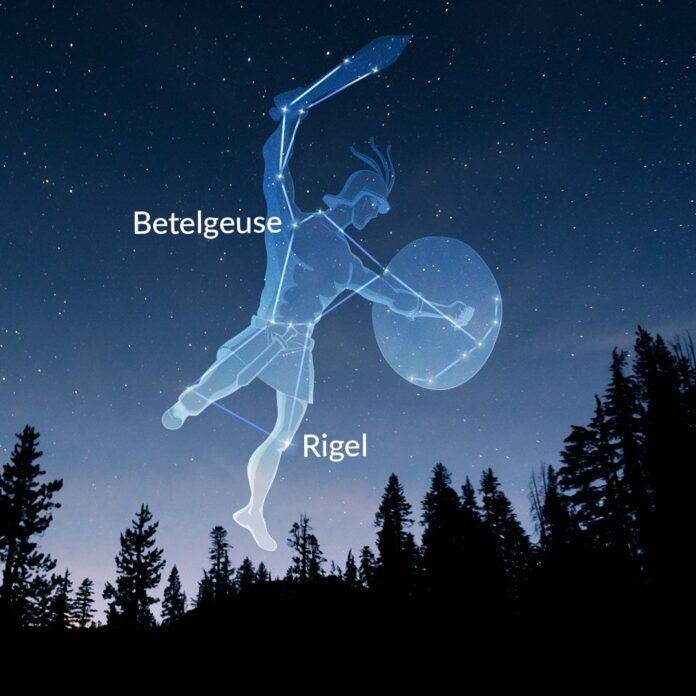Rigel is the brightest star in the constellation of Orion. Its name translates from Arabic as “foot.” Betelgeuse forms the shoulder, and Rigel, accordingly, the foot of Orion. It ranks seventh among the brightest stars in the sky.
Located near the celestial equator, it can be observed from almost any point on Earth. It is visible even under slightly cloudy conditions (best seen in the winter months). It is not surprising that it served as a guiding star in the past. The first mention of Rigel in astronomical tables dates back to 1252.
Main Characteristics
- White-blue supergiant (most of its light is emitted in the blue part of the spectrum).
- Variable star with an irregular cycle (one of 2,777 variable stars in the constellation of Orion). Interestingly, such a characteristic is usually not typical for supergiants.
Rigel’s age is only about 8 million years (very young in cosmic terms for a star system). - Distance from the Sun is about 264 parsecs (860 light-years).
- Mass is about 17 times that of the Sun.
- Diameter is about 110 million kilometers (exceeds the Sun’s diameter by 79 times).
- Surface temperature is approximately 11,000 degrees Celsius (12,130 K).
- Rotation speed is 25 km/s.
- Luminosity: Rigel’s spectral emissions leave about 120,000 solar luminosities (among visible stars to the naked eye, it only loses to Deneb in the constellation of Cygnus). Replacing the Sun with Rigel would mean the end of the existence of the Solar System.
The radiation flux is 15 kW/cm2 compared to 1.4 kW/m2 for the Sun, vaporizing all objects at a distance of 150 million kilometers. The X-ray emission velocity is about 20.7 km/s. Variable brightness is explained by pulsation (a result of hydrogen fusion nuclear reactions).
Thanks to Rigel’s radiation, the Orion Nebula and the Witch Head Nebula (essentially gas-dust clouds) become visible.
For residents of northern latitudes, the flickering light of Rigel, like Sirius, will shimmer with all possible colors of the rainbow due to the atmospheric air currents. Such a spectacular sight cannot be seen in southern latitudes due to the high position of the Orion constellation in the sky.
Interesting Facts about Star Rigel:
- Over its lifetime, Rigel has decreased in mass by an amount equivalent to three solar masses. It ejects about 90 billion tons of stellar material into space every second. At this rate, Rigel’s potential lifespan is estimated at 20 million years (for comparison, the Sun is already 4.5 billion years old).
- Rigel and Betelgeuse are symmetrically positioned with respect to Orion’s Belt: the former is on the lower right, and the latter is on the upper left.
It is a visual binary star. Rigel B, the second star, is 500 times fainter than the primary star, and its mass is 2.5 times that of the Sun. It is visible with a telescope of medium power. - A mountain peak named Rigel (1910 meters high) is located in Antarctica (on the southernmost continent on Earth).
The star is mentioned in the “Star Trek” series as a system with habitable planets. Unfortunately, due to its truly infantile real age, the statement cannot be true (the formation of a solid surface in such a short time is impossible).
Rigel is surrounded by a halo of gas, the origin of which is associated with the formation of the star. - Australians did not settle on one name for the star: northerners call Rigel Osmungargu (Leader of the Red Kangaroo), and residents of the southwest call it Yerrerdet-Kurkka.
In ancient Egypt, Rigel was associated with the star king Sah (later Osiris), the patron of the deceased. - The forecast for the end of Rigel’s life cycle is an explosion with the formation of a neutron star or a black hole.
